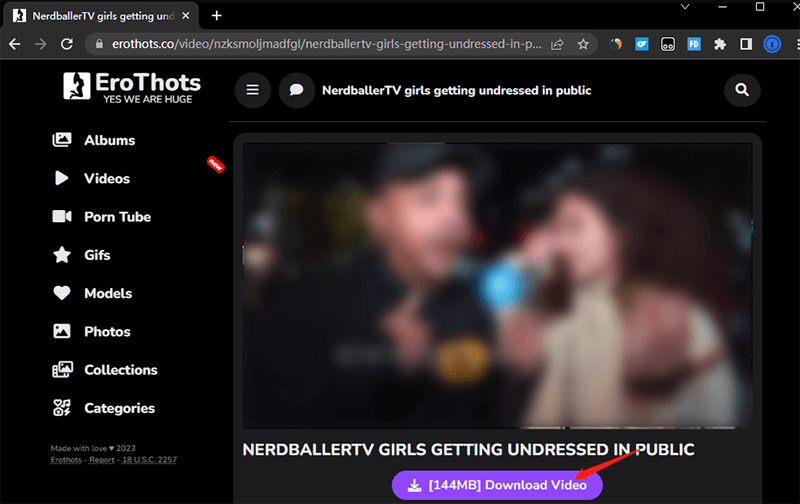
Introduction to Erothots
The internet is full of niches, subcultures, and unique communities that thrive on creativity, individuality, and the ability to push boundaries. Among these digital movements, Erothots has emerged as one of the most discussed and often misunderstood terms. At first glance, the word might sound unusual or even controversial, but the reality is that it represents a fascinating slice of internet culture. It blends adult-themed creativity with the modern influencer lifestyle, giving rise to a new form of online entrepreneurship.
Erothots essentially refers to individuals—mostly women, but not exclusively—who leverage social media platforms to share adult-themed or suggestive content. Unlike traditional models of the adult entertainment industry, they operate independently, often building massive followings and engaging with their audiences in unique ways. What sets them apart is their entrepreneurial edge; they don’t just create content for fun, but they turn it into a thriving business model.
This culture has grown rapidly thanks to platforms like Twitter, Instagram, TikTok, and subscription-based services like OnlyFans. For many, the term “Erothots” has come to symbolise independence, self-expression, and the power to control one’s image while monetising it. It’s a mix of artistry, boldness, and business savvy that has made this online phenomenon impossible to ignore.
The Origin of Erothots: Where Did It All Begin?
To understand the rise of Erothots, it’s essential to look back at the broader context of how digital spaces have shaped modern adult entertainment. Traditionally, adult content was dominated by studios, distributors, and big networks that controlled what audiences saw and how performers worked. This system left little room for performers to maintain their brand, pricing, or even the type of content they wanted to create.
The shift began when social media started giving individuals the tools to promote themselves directly to audiences. Platforms like Instagram and Snapchat played an early role by letting people post suggestive photos, teasing fans while building a loyal following. It wasn’t long before subscription-based services took things a step further, allowing creators to monetise their content without intermediaries. Suddenly, performers had the power to decide what they wanted to post, how much they wanted to charge, and how they wanted to interact with their audience.
The term “Erothots” itself is a blend of “erotic” and “thots” (a slang acronym for “That Ho Over There,” though it has since been reclaimed in many online spaces). While initially derogatory, many creators embraced the term and used it as a badge of empowerment. They redefined it to mean someone who confidently monetises their appeal online, unapologetically embracing sexuality while turning it into a legitimate career.
The Rise of Digital Adult Creators
The world of Erothots represents more than just a trend—it’s the product of a global cultural shift. Today, millions of people are consuming adult content differently than they did a decade ago. Instead of visiting traditional sites, they are following independent creators who offer a more personal, relatable, and customisable experience. This shift reflects a larger movement in entertainment, where fans want direct access to the people they admire.

Creators under the Erothots umbrella often thrive because they offer a sense of authenticity. Their content feels less staged and more natural, giving fans the impression of intimacy. Unlike big production companies, these independent creators are approachable. Many even engage directly with their fans through private chats, custom requests, or social media shoutouts. This creates an illusion of closeness that traditional adult entertainment simply cannot replicate.
At the same time, the business side of Erothots is booming. Many creators report making thousands—or even millions—through platforms like OnlyFans and Fansly. The financial independence that comes with this work has opened doors for countless individuals who may not have had access to traditional opportunities. In some cases, creators have been able to leave day jobs, pay off debts, or even start new businesses, all thanks to the revenue from their digital adult content.
Erothots as Entrepreneurs
One of the most interesting aspects of the Erothots phenomenon is the sheer entrepreneurial spirit behind it. Being an Erothot isn’t just about posting photos or videos—it’s about building a brand. These creators often function as their managers, marketers, photographers, and publicists. They invest time and effort into cultivating an image that attracts and retains loyal subscribers.
Marketing plays a massive role in their success. Many use Twitter for promotion, Instagram for lifestyle aesthetics, TikTok for teasing short clips, and private platforms for paid content. This multi-platform strategy ensures maximum visibility while keeping their audience engaged. Creators must learn how to master algorithms, understand analytics, and even negotiate brand partnerships. In other words, they operate like small businesses in a highly competitive digital market.
Another factor that sets Erothots apart is their understanding of niche audiences. Instead of trying to appeal to everyone, many creators specialise in specific types of content, from cosplay and roleplay to fitness and lifestyle-focused adult material. This niche strategy allows them to stand out in an oversaturated industry, proving that success often comes from embracing individuality.
The Controversy and Criticism Surrounding Erothots
Of course, the rise of Erothots hasn’t been without its share of controversy. Critics argue that this trend normalises adult content to younger audiences and blurs the line between influencer culture and adult entertainment. Others claim that the commodification of intimacy could have long-term social consequences.
There are also debates about stigma. Despite the independence and empowerment that many creators enjoy, society still holds biases against those in adult industries. Erothots often face harassment, online shaming, or even professional discrimination outside their work. Some people struggle to separate their entrepreneurial endeavours from moral judgments.
Yet, many creators push back against this criticism, emphasising that their work is a legitimate form of self-expression and income. They argue that everyone has the right to control their body, image, and career path. In fact, for some, being an Erothot is less about “selling sexuality” and more about reclaiming power from industries that have historically exploited performers. By taking control of their platforms, they challenge outdated ideas of what adult work should look like.
The Future of Erothots
Looking ahead, it’s clear that the Erothots movement isn’t going anywhere anytime soon. As long as there is demand for personalised, creator-driven adult content, there will be space for Erothots to thrive. With technology constantly evolving, new platforms and monetisation strategies are likely to emerge, making it even easier for creators to connect with their audiences.
Virtual reality (VR) and augmented reality (AR) could be the next frontier, allowing fans to engage with creators in immersive environments. Similarly, blockchain technology and decentralised platforms might give Erothots even more control over their earnings, eliminating the need for extensive hosting services. The possibilities are endless, and the creators who adapt to these changes early will likely remain at the top.
At the same time, the cultural conversation around Erothots is also evolving. With mainstream celebrities like Bella Thorne and Cardi B entering the subscription-based content scene, the stigma around adult-themed self-promotion is slowly fading. It’s possible that within a decade, being an Erothot—or something like it—will be as normalised as being a YouTuber or Instagram influencer today.
Frequently Asked Questions About Erothots
1. What does the term Erothots mean?
Erothots is a combination of “erotic” and “thots,” referring to creators who share adult-themed or suggestive content online, usually through platforms like Twitter, Instagram, and subscription services such as OnlyFans. While the word once had a derogatory undertone, many creators have embraced it as a term of empowerment.
2. Is being an Erothot a real career?
Yes, for many people, being an Erothot has become a legitimate career path. Some creators earn more than traditional jobs, often using their income to achieve financial independence, pursue creative projects, or support their families. Like any entrepreneurial venture, it requires dedication, strategy, and consistency.
3. How do Erothots make money?
Most Erothots earn through subscription-based platforms where fans pay monthly fees to access exclusive content. Others make money from tips, custom requests, private chats, or even merchandise sales. A few also branch out into sponsorships or collaborations with brands looking to tap into their audience base.
4. What challenges do Erothots face?
While the financial rewards can be high, Erothots face challenges such as online harassment, platform restrictions, and societal stigma. Additionally, the competition in this space is fierce, meaning creators must constantly innovate and promote themselves to remain successful.
5. What does the future look like for Erothots?
The future looks promising as technology evolves. With growing acceptance of adult content creators and the rise of immersive tech like VR, Erothots are likely to expand their reach even further. However, the industry will also need to address issues such as stigma, online safety, and platform reliability to ensure long-term sustainability.





